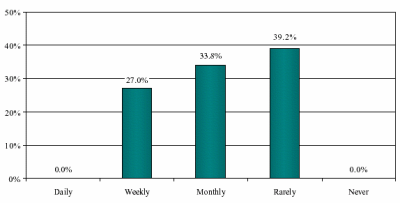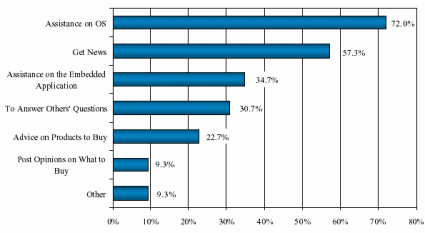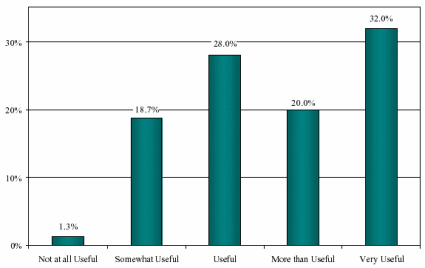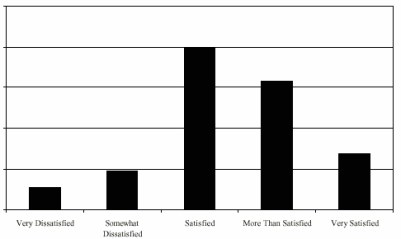Article: VDC Whitepaper: Linux’s future in the embedded systems market
Jul 15, 2002 — by LinuxDevices Staff — from the LinuxDevices Archive — 6 viewsForeword: 'Linux's Future in the Embedded Systems Market' is an analysis by Venture Development Corporation (VDC) of the current size and future growth of the worldwide market for embedded Linux software solutions. This multiclient study is designed to provide subscribers with relevant and up-to-date market intelligence to support strategic marketing and product… planning decisions. The following whitepaper by VDC industry analysts Chris Lanfear and Stephen Balacco provides a brief summary of the findings of the study.
Linux's future in the embedded systems market
by Chris Lanfear and Stephen Balacco
Industry analysts, Venture Development Corporation
April 2002
This paper is a brief summary of VDC's analysis of Linux's future in the embedded systems market. The base year for market data and analysis is 2001, with a five year forecast period through 2006. In this study, VDC presents data on the merchant market for embedded Linux operating systems and software development tools. The merchant market is defined as products produced and sold in the open market. It does not include products developed in-house by OEM developers for use in their own products.
Market Overview
It was not that long ago that the embedded operating system market was limited to a small circle of real-time operating systems powering sonar, radar, engine controls, and process controls. The increasing level of high performance, computing, connectivity, and more feature rich software has resulted in more technologically advanced devices, which have raised the notions of what embedded systems are becoming and are capable of doing.
Embedded software developers are looking to develop new applications and services that create new scenarios for connected smart devices. Embedded OS vendors continue to focus on providing embedded software developers a value chain of integrated products and services. These software development solutions add value to the development process, and aid developers in managing the growing complexity of product development and focusing on differentiating their products.
While embedded has traditionally implied hard real-time, many new devices are real-time in the softest sense. Today, in addition to Linux, handheld computer OSes from Microsoft and Palm has entered the market space, blurring the line with embedded operating systems.
An extensive analysis of the world market leads us to the following conclusions . . .
On the world market for Embedded Linux development solutions:
- Shipments of embedded Linux OSes, complementary add-on components, and related services reached over $50 million during 2001. VDC forecasts worldwide shipments of embedded Linux development solutions through 2006.
- North America accounted for the greatest share of shipments in 2001. Going forward, VDC estimates Asia-Pacific to grow the fastest.
- Telecom/datacom vertical market accounted for the greatest share of shipments in 2001. Going forward, VDC estimates consumer electronics to grow the fastest.
- VDC forecasts on seven vertical markets and applications within those markets, to include:
- Consumer Electronics
- Automotive
- Information Automation
- Industrial Automation
- Building/Home Automation
- Telecom/Datacom
- Military/Aerospace
- Consumer Electronics
- In 2001, leading embedded Linux solution providers include Red Hat, MontaVista Software, Lineo, and LynuxWorks (see Tables 1 and 2, below).
- An extensive Web-based end user survey of 11,000 embedded systems developers was conducted with the primary purpose of understanding their interest, opinions, and to identify trends within this market.
- Based on current embedded projects, survey respondents are segmented by currently using Linux, planning to use Linux, and no plans to use Linux. Exhibits include: vertical markets, project time-to-market, development cycle, software design methodologies, programming languages, host platforms, microprocessor architectures, memory and real-time requirements, expected device shipments, and others.
Table 1: Linux Distribution Being Used
in Current Embedded Project
(in Rank Order)
- Red Hat
- Roll-Your-Own
- Non-commercial Distribution
- MontaVista Linux (MontaVista)
- Other Commercial Distribution
- BlueCat (LynuxWorks)
- RedICE Linux (RedSonic)
- TimeSys Linux GPL (TimeSys)
Table 2: Linux Distribution(s) Being Evaluated
for Use in an Embedded Project
(in Rank Order)
- Red Hat
- Roll-Your-Own
- MontaVista Linux (MontaVista)
- Embedix (Lineo)
- Non-commercial Distribution
- BlueCat (LynuxWorks)
- Other Commercial Distribution
- RedICE Linux (RedSonic)
- TimeSys Linux GPL (TimeSys)
Other findings include:
- As a powerful movement and open development model, the open source community continues to drive innovation and offers OEMs the ability to leverage thousands of developers for support (see Figures 1-3 below).
- Business models continue to focus on a technology foundations built on open source, complementary add-on technology, and related services, including technical support and maintenance, and professional services that address specific OEM requirements.
- Embedded developers using Linux identified a high level of satisfaction in Linux meeting their technical requirements and technical support provided by their Linux solution providers (see Figures 4 and 5, below)
- Availability of source code, reduced licensing, reliability, open source community support, as well as others, are key reasons for the use of Linux by embedded developers.
- Embedded developers' decision to not use Linux is based mostly on technical issues, quality of support, and licensing concerns (see Table 3, below).
(Percent of Respondents)

(Percent of Respondents)

(Percent of Respondents)

(Percent of Respondents)

(Percent of Respondents)

Table 3: Most Important Factors Inhibiting Linux Adoption
by Respondents Planning to Use Linux
(in rank order)
- Real-time Limitations
- Doubts About Availability and Quality of Support
- Fragmentation Concerns
- Doubts About Vendor Longevity
- Footprint Size
- Others
Availability of Research Study
Linux's Future in the Embedded Systems Market is available immediately from Venture Development Corporation (VDC) for $4,950. This research is part of VDC's embedded software strategic market intelligence program, the first comprehensive body of market research reports targeted exclusively at the embedded systems industry.
This article was originally published on LinuxDevices.com and has been donated to the open source community by QuinStreet Inc. Please visit LinuxToday.com for up-to-date news and articles about Linux and open source.